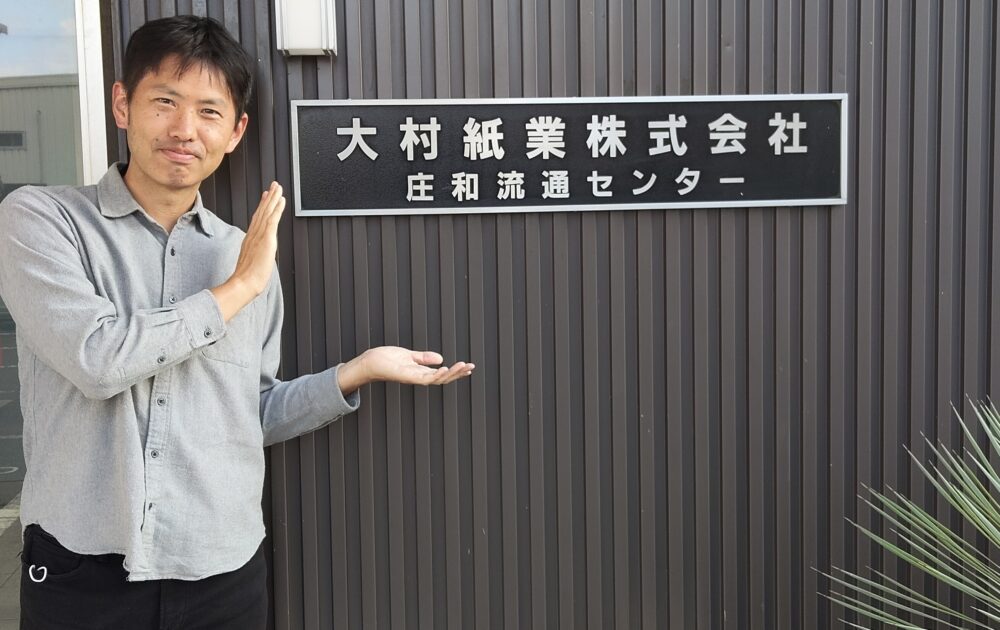90% Faster Contract Completion with SignTime e-Signatures | Publishing Logistics DX Case Study

Ōmura Shigyo Co., Ltd.

Interviewee
System Manager Mr. Komoriya
To achieve faster contract completion, reduce costs, and promote DX, Ōmura Shigyo adopted SignTime e-Signatures. Paper-based workflows were replaced with electronic contracts, eliminating stamp taxes and mailing fees while improving operational efficiency. This case study explores the implementation process, workflow improvements, and the balance between efficiency and client service.
- Industry
- Media
- Number of Employees
- Medium
- Pain Points
- Cost Consumption、Want to get rid of paper documents
・1–2 Weeks for Contract Completion: Paper contracts required creation, stamping, mailing, and return.
・High Annual Costs: Stamp tax and mailing exceeded ¥50,000 per year.
・Manual Processes Across Branches: Document creation, entry, and storage were inefficient; contracts from other branches were not immediately accessible.
・Same-Day Contract Completion: Contracts are now completed on the same day or next day.
・Zero Stamp Tax & Mailing Costs: Digital contracts eliminated all related expenses.
・Template-Based Workflow: Prevents errors, removes storage needs, and enables instant access across branches.
How were contracts created, exchanged, and finalized before implementing SignTime e-Signatures?
Before SignTime, contracts were handwritten, duplicated into two copies, and mailed. One copy was sent to the client as a record, while the other, signed and stamped, was returned and stored. This manual workflow typically required 1–2 weeks and imposed significant operational burden. The process also limited responsiveness to clients, highlighting the need for a digital solution to improve efficiency in publishing logistics.
What prompted the adoption of e-Signatures?
The company’s president prioritized digital transformation (DX) and paperless workflows. The goal was to reduce manual workload, eliminate unnecessary costs such as stamp tax and postage, and improve operational efficiency. Paper-based contract procedures created bottlenecks and limited agility, making it difficult to respond quickly to client needs and internal workflow demands. Implementing a digital solution became essential.
Why was SignTime selected among other e-Signature services?
SignTime was chosen for its strong cost-performance, transparent pricing structure, and easy-to-understand subscription plan, which includes sufficient sending volume with no additional fees. This allowed management to accurately estimate costs and make informed decisions. SignTime’s intuitive interface and template functionality matched the company’s operational requirements, enabling smooth integration into existing workflows while ensuring compliance and efficiency.
Was the implementation process smooth?
Although employees were first-time users of e-Signatures, SignTime staff conducted internal training sessions, explained the system in detail, and assisted with template creation. Personalized support allowed employees to confidently begin using the system without disrupting ongoing operations.
After implementation, concise manuals were created for branch managers, and in-person or online guidance was provided as needed. SignTime’s support team quickly resolved operational questions or issues, ensuring seamless adoption across the company.
How did the contract workflow change after implementation?
Contracts are now created using shared SignTime templates. Completed documents are first downloaded as PDFs for client review. Once approved, they enter the e-Signature workflow. Most contracts are processed via templates, while individual document creation occurs only when requested by clients. This workflow streamlines operations, reduces errors, and ensures consistency and speed, while allowing flexibility for unique client requirements.
What were the key benefits after implementing SignTime e-Signatures?
- Reduced administrative work: Printing, stamping, mailing, and physical storage were eliminated. Template-based contract creation allows employees to prepare contracts by filling in required fields, preventing errors and omissions.
- Faster contract completion: Contracts that previously required 1–2 weeks can now be finalized on the same day or next day, improving client service and internal operations.
- Cost savings: Stamp tax and mailing costs, averaging ¥5,000 per month, were eliminated. The operational benefits and faster turnaround deliver ROI that exceeds subscription fees.
- Paperless workflows and efficient management: Digital contracts remove the need for physical storage, enable instant access across branches, support internal control and audit compliance, and improve transparency.
- Template-based efficiency: Standardized templates ensure consistent document quality, reduce input burden, and prevent incomplete contracts from advancing.
In summary, by implementing SignTime, Ōmura Shigyo reduced contract turnaround from up to two weeks to a single day, eliminated stamp and mailing costs, standardized document templates, and enhanced internal audit control across all branches.
How did e-Signatures improve internal controls and audit compliance?
SignTime prevents contract tampering and provides transparent history tracking. Administrators can monitor contracts across multiple branches. Historical documents are easily retrievable, improving internal control and audit readiness.
How did staff respond to the new system?
Employees reported that they could focus more on core business activities rather than administrative tasks. Branch managers efficiently respond to client inquiries without interrupting workflows, resulting in smooth operations company-wide.
How did clients react to using e-Signatures?
Clients appreciate that SignTime e-Signatures comply with Japan’s Electronic Books Maintenance Act, providing a secure and reliable signing process. As clients became familiar with the system, inquiries were handled more efficiently, and contract verification was completed quickly, increasing satisfaction and trust.
What is the current level of paperless adoption within the company?
While the publishing industry still relies heavily on paper, the company plans to digitize internal documents, including approval forms, travel expense reports, and employee contracts. By expanding paperless workflows and implementing DX initiatives, Ōmura Shigyo aims to further improve efficiency, enhance transparency, and continue driving digital transformation across all departments.
Read More Information
| Company Name | Ōmura Shigyo Co., Ltd. |
|---|---|
| Industry | Media |
| Company Profile | Ōmura Shigyo, based in Kasukabe City, Saitama, specializes in optimizing publishing logistics and operational efficiency. Serving over 400 publishers, the company provides book inspection, refurbishment, shipping, storage, and inventory management through its proprietary OS-WEB system. Additional services include Book-on-Demand, billing and call center support, EDI solutions, and recycling of unused books. Guided by the principles of Reduce, Recycle, Rethink, and Reconstruction, Ōmura supports clients in achieving operational efficiency and digital transformation (DX). |
| Number of Employees | Medium |
| URL | https://www.ohmurashigyo.com/ |
